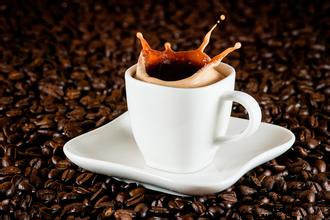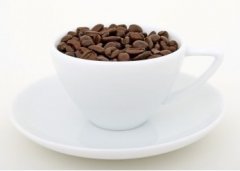The right way to taste coffee color, aroma, flavor, body color

The color of coffee refers to two aspects: the color of roasted coffee beans and the color of coffee soup, that is, the color of coffee liquid. Like drinking red wine, when I get a cup of coffee, the first thing I need to do is neither smell the fragrance nor taste it, but watch the color. First, I look at the roasting color of coffee beans. Generally speaking, the lighter the color of coffee beans is, the closer it is to wheat color. Then the sour taste and unique flavor of coffee will be strengthened. If friends who are afraid of acid can try not to choose this color beans to drink, but in most cases, Only beans of higher quality will be roasted to a relatively shallow level, because if beans of poor quality must be deeply baked to whitewash its flavor. The darker the coffee beans are roasted and the closer they are to black, the more bitter the coffee is and the less its flavor is. It is no exaggeration to say that after roasting to a certain depth, the taste of any coffee is about the same. And the darker the color, the heavier the baking degree, then the degree of carbonization of coffee beans will be serious, with the burnt taste of coffee will appear. At present, there is no international standard for judging the color of coffee roasting, but generally speaking, color cards and chromatograph will be used as a professional quantitative standard. Coffee soup color is almost directly proportional to coffee baking color in most cases. Generally speaking, the lighter the roasting color is, the closer the soup color is to amber, and the darker the baking color is, the closer it is to black, so the lighter the soup color is, the heavier the general sour taste is. Otherwise, the bitterness is heavier. But the more important point revealed by the soup color is the mellow thickness of the coffee. Turn the cup slightly to the side and observe the edge of the liquid. According to the fullness of the color on the edge, you can roughly see whether the mellowness of the beans is very good. The observation of coffee color is the initial understanding of coffee as a whole, so it is very important that a kind of high-quality beans can really give full play to its best flavor only when roasted to the most appropriate degree, which is also the original intention of observing color.
Important Notice :
前街咖啡 FrontStreet Coffee has moved to new addredd:
FrontStreet Coffee Address: 315,Donghua East Road,GuangZhou
Tel:020 38364473
- Prev

The right way to taste coffee color, fragrance, body fragrance
Coffee aroma is generally tasted from two aspects: dry aroma and wet aroma. Professionally, we generally rely on the flavor bottle for the description of aroma, and a more unified description of aroma can be formed by comparing it with the smell in the bottle. But we rely more on experience to smell incense in daily life. The formation of coffee flavor is affected by coffee raw beans, roasting, grinding, freshness, extraction method and drinking temperature.
- Next

Fine coffee common sense different coffee is suitable for drinking temperature
When drinking different kinds of coffee, the temperature of the coffee is very important, basically all the coffee is required to drink hot, so only those who do not know how to appreciate the coffee will order a cup of coffee and drink it for half a day. Similarly, in many cases, the temperature of coffee produced by baristas will be unstable, in fact, it is a good professional habit to adjust the temperature of coffee according to the season, but this
Related
- Beginners will see the "Coffee pull flower" guide!
- What is the difference between ice blog purified milk and ordinary milk coffee?
- Why is the Philippines the largest producer of crops in Liberia?
- For coffee extraction, should the fine powder be retained?
- How does extracted espresso fill pressed powder? How much strength does it take to press the powder?
- How to make jasmine cold extract coffee? Is the jasmine + latte good?
- Will this little toy really make the coffee taste better? How does Lily Drip affect coffee extraction?
- Will the action of slapping the filter cup also affect coffee extraction?
- What's the difference between powder-to-water ratio and powder-to-liquid ratio?
- What is the Ethiopian local species? What does it have to do with Heirloom native species?

